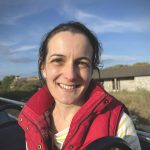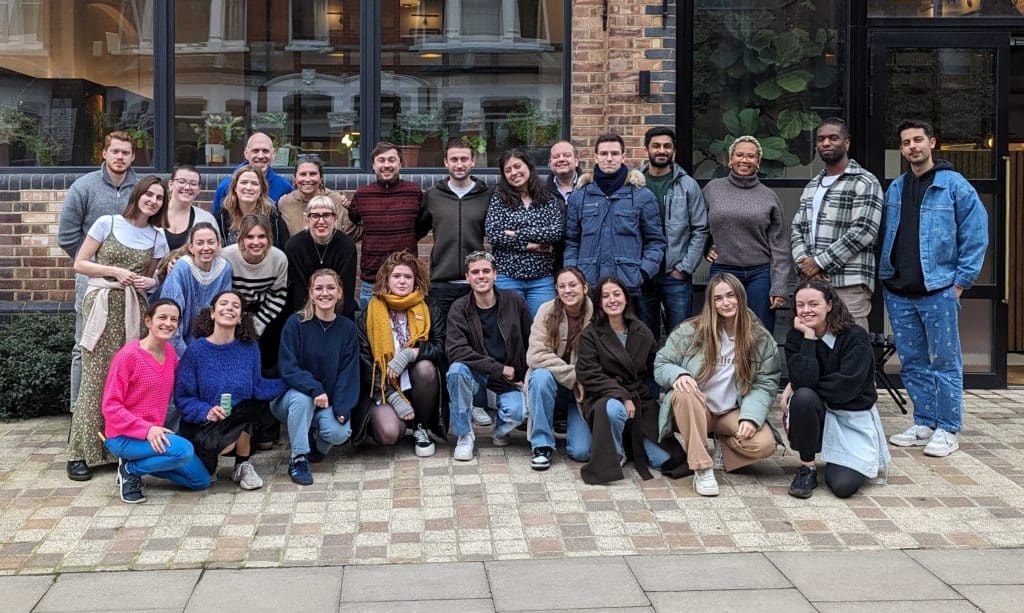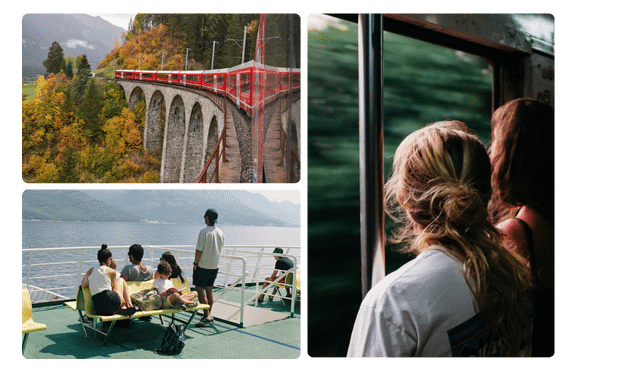Recruiter
User Experience & Design
View profile
Meet Cat Jones, founder and CEO of Byway, a travel company bringing flight-free, journey-based holidays into the mainstream. Launched in March 2020, Byway offers unique, multi-stop trips via train, boat, and bus, helping travelers explore off the beaten path while avoiding over-tourism.
In this article, Cat Jones discusses Byway’s journey from its launch during COVID-19 to becoming a leader in flight-free travel. She highlights the challenges of scaling a sustainable travel business, the importance of customer feedback, and shares tips on navigating investment rounds and building a strong, mission-driven team.
Cat: I’m Cat, the founder and CEO of Byway. We set up Byway during the COVID lockdown in March 2020. Our initial steps were to incorporate the company, apply to become a B Corp, and start building a waiting list for people who wanted to go on holidays once the world opened up again.
Byway is all about flight-free holidays. We focus on the joy of the journey, putting the experience of travel back into travel itself. All our trips are by train, boat, and bus, helping people explore off the beaten path, avoid places experiencing massive over-tourism, and connect with the locations they’re travelling through. Our journeys tend to be multi-stop, featuring beautiful ferry rides, gorgeous train journeys, sleeper trains and sleeper boats, but never airplanes.
We aim to bring flight-free travel and journey-based travel into the mainstream. Personally, I’ve never owned a car, so I’ve always travelled this way. Pre-COVID, I was working in investing in travel and media startups, contemplating how to create a company that could stand for journey-based travel. COVID was a catalyst for me; it was a time when travel was going to look quite different on the other side. We saw this as a great opportunity to build a business and the technology to scale this kind of travel post-pandemic. Now, we’re about 4.5 years old, have a team of 40-45 people, and have just closed a £5 million Series A funding round.

Byway team photo
Cat: Byway is a technology business with a brand that prioritises amazing customer service. We’re very active with our customers on WhatsApp and have 96% five-star reviews on Trustpilot, which we’re very proud of. It’s important for us to tell the stories of slow travel and journey-based trips while also having the technology to scale this approach. Dynamic journey packaging technology that allows Skyscanner and Kayak to put together flights and accommodation for customers has been around for years, but creating that for journey-based travel – trains, boats, buses, multimodal and multi-stop travel – was a huge challenge.
When we started in 2020, it was just me and Lizzie, who was our intern at the time. We were manually building trips for customers using PDFs and a basic website with an email waiting list. By the second half of 2020, we began to layer some technology into our processes, and we won an Innovate UK grant of 100K, which allowed us to bring in Rich, our CTO, and Jordan, our tech lead. This was the beginning of building the technology that now powers most of what we do.
Cat: One of our biggest challenges is that we have an exceptional team. Hiring superstars who are a perfect fit for Byway in terms of mission and values is crucial for us. Our hiring process is more involved than average because we want to ensure a good fit.
As we grow and scale, we need to specialise functions and link teams more effectively. The pace of organisational change and the fast growth of our team means that we constantly juggle roles and responsibilities. We prefer internal promotions over external hires, which can be challenging but ultimately rewarding.
One tip I have is to use job specs. Every role, whether newly created or promoted into, has a detailed job spec. This helps in career conversations and in planning for future roles. Sharing these specs with employees helps them understand the requirements and responsibilities of potential future positions, allowing them to prepare and grow into those roles.

Cat: We’ve always stayed very close to our customers. In the first year, we had WhatsApp groups with our customers to hear their feedback in real time. We felt it was really important to find out exactly what we were doing right, what we were doing wrong, and how we could improve. This direct communication helped us understand their needs and refine our product.
We learned that customers appreciated having us on WhatsApp, especially for travel disruptions and general queries. So many of our customers had never done flight free holidays before, so it was really helpful for them to ask about disruptions and rerouting trips, about finding platforms at train stations, and we could help them immediately. This feature became a core part of our offering, even though it wasn’t part of our initial vision. Now, we have customer feedback forms for all our trips, and the feedback is shared with the entire company through Slack. Regularly speaking to customers helps us stay aligned with their needs and expectations.
Cat: Starting during COVID, we had to overcome travel uncertainty, which helped us build early customer connections. Another challenge was understanding and addressing the needs of more typical travellers, who have different habits and concerns.
Entering new markets, especially the US, required understanding distinct customer behaviours. For example, convincing American customers visiting Europe for 3 weeks to get trains rather than short haul flights. Constantly learning about our customers and how our product fits their needs is crucial.
Trips vary greatly, such as those in the Arctic Circle versus Spain. Ensuring our product fits different trip types and customer needs at scale, instantly, has been our biggest challenge. Developing the technology to support this complexity is key to our success.
Cat: Having a good pitch deck is crucial. For our recent Series A, we invested in a slick, professionally designed deck, which isn’t something we had ever done before, and which made a big difference in securing meetings with investors.
Another important aspect is having a monthly update – something that not enough founders find time to prioritise. We send out a detailed update every month to our existing shareholders, potential investors, partner companies, and our team. We detail our wins, our challenges, our next steps, and report all of our results. This transparency keeps everyone informed and engaged, generating opportunities and support.
One of our investors in our last round was someone who had been quietly following our updates for three years, and when we announced our raise, they reached out with an immediate offer of support. They had been really impressed by our results every month for the past three years, and so were keen to get onboard as soon as we began the fundraising round.
The purpose of article series ‘Product | People | Potential’ is to feature and showcase the very best UK start-ups with grand potential, truly inspiring businesses that are shaking up their sector. We capture and share the stories behind the name. We collate authentic peer to peer real talk, while celebrating the growth and success thus far and gather a glimpse of what’s ahead.